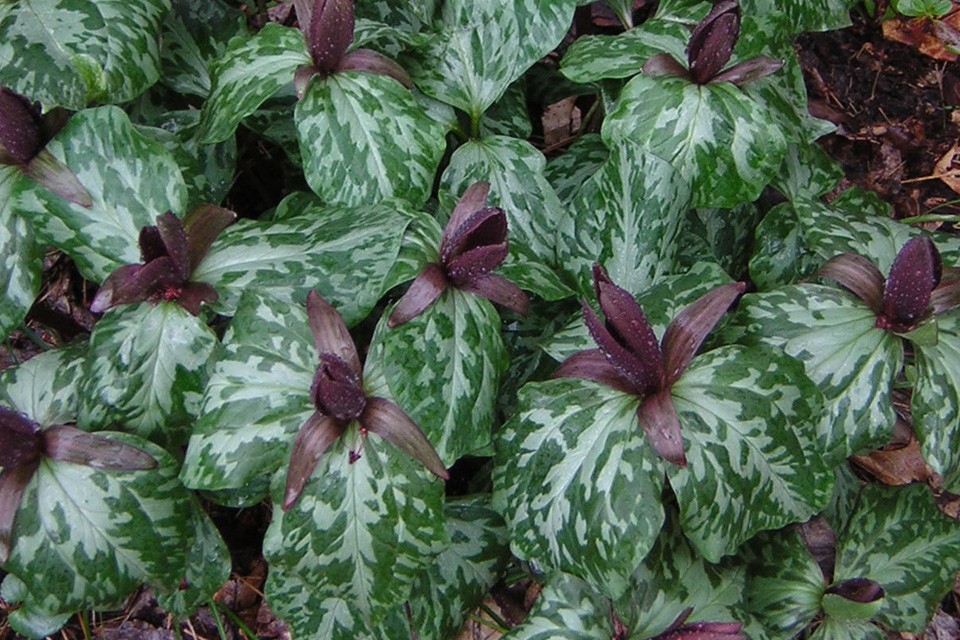
Submitted by Jason Reeves, research horticulturist, the University of Tennessee Gardens, Jackson
You know spring is upon us when you see the foliage of trillium pushing through the ground. Along with other spring ephemerals like bloodroot and Virginia bluebells, trillium provides hope after a long winter.
There are more than 30 species of trillium native to the U.S. One of the more common species in Tennessee is Trillium sessile. Its common names include toadshade, toad trillium, sessile trillium and red trillium.
The height of the plants ranges from 5 inches to 12 inches, and the single stalk is topped with a symmetrical whorl of three leaves. The oval leaves average 2 inches to 4 inches long with the color and patterns varying widely from solid green to a mottled light and dark green, or even chocolate or a somewhat silver color. As the foliage matures, the mottling fades.
In the center of the whorled leaves the stalk-less flower is produced. Narrow 1-inch to 2-inch tall petals point skyward and are skirted by three smaller sepals that protrude at a 45-degree angle. Both petals and sepals can range in color from reddish-brown and maroon to greenish yellow.
Usually found growing in the wild in moist, rich, deciduous woodlands, it can also be found in somewhat chalky, limey soils. In the garden, toadshade performs best in shady to partly shady locations in moist soils abundant with organic matter. It is drought tolerant, but will go dormant earlier in the season when dry.
It is generally recommended that trillium be divided while dormant, but I have been successful through the years dividing clumps of Trillium sessile in my garden just as they emerge in the spring. I dig a section, being careful to keep the soil intact and to replant right away.
It’s worth noting that plants should never be dug from the wild unless the area is threatened by construction. Your best sources are specialty nurseries that propagate their own stock, or a friend with an established stand in their landscape.
Over time it will spread by rhizomes to form a beautiful stand. It can be seen growing in the UT Gardens locations in Knoxville and Jackson.
Jason Reeves is a research horticulturist with the University of Tennessee Gardens, Jackson. The UT Gardens includes plant collections located in Knoxville, Jackson and Crossville. Designated as the official botanical garden for the State of Tennessee, the collections are part of the UT Institute of Agriculture. The gardens’ mission is to foster appreciation, education and stewardship of plants through garden displays, educational programs and research trials. The gardens are open during all seasons and free to the public. For more information see http://utgardens.tennessee.edu
Contact:
Jason Reeves, UT West Tennessee AgResearch and Education Center, 731-424-1643